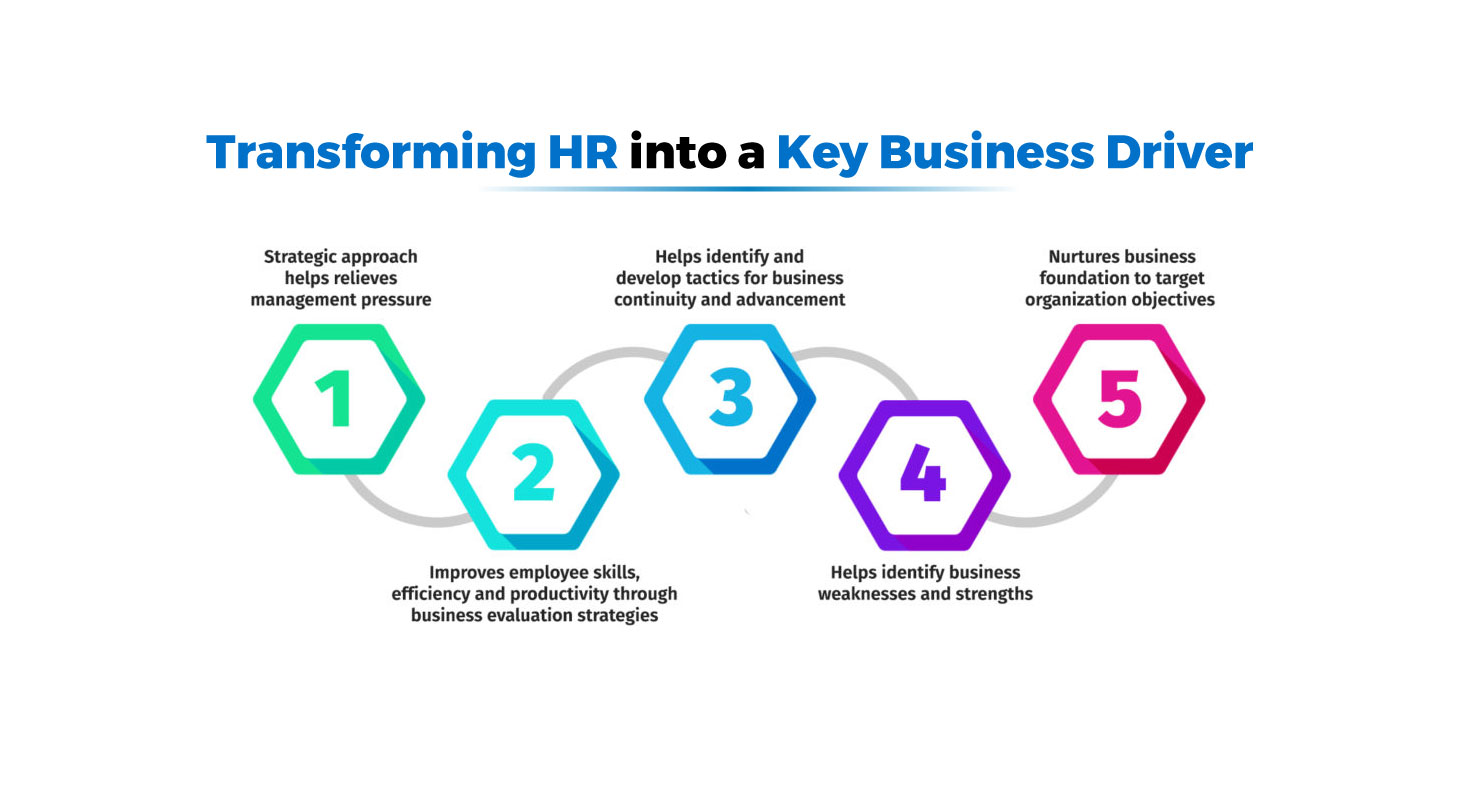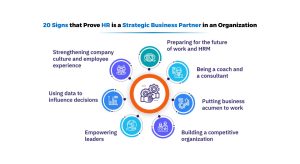Book Appointment Now

Transforming HR into a Key Business Driver
The traditional role of Human Resources has evolved significantly, transforming from a purely administrative function to a strategic force that drives business success. In today’s dynamic and competitive environment, HR must align itself with business objectives, focusing on value creation and becoming a true business partner. Let’s explore how HR can achieve this by enhancing its activities across various domains.
1. Aligning Talent Strategy with Business Goals: HR’s role begins with understanding the core objectives of the business. It’s essential for HR leaders to collaborate with executive teams, ensuring the talent strategy is aligned with the broader business strategy. This alignment can enhance workforce productivity, streamline recruitment, and foster a culture that reflects the company’s mission and values. For instance, if a company’s goal is to expand into new markets, HR can develop targeted recruitment strategies to source talent with relevant regional expertise or language skills.
2. Data-Driven Decision Making through HR Analytics: The modern HR department is data-driven, utilizing analytics to make informed decisions and identify trends that impact the organization. HR analytics can reveal patterns related to employee performance, turnover, and engagement. By analyzing data, HR can develop proactive strategies to address potential issues, such as identifying departments with high turnover rates and implementing retention programs before productivity is affected. These insights enable HR to make a direct impact on business outcomes, strengthening their role as a strategic partner.
3. Developing a Strong Employer Brand: In a competitive job market, HR’s role in establishing a strong employer brand is crucial. Employer branding not only attracts top talent but also retains existing employees, ultimately reducing recruitment costs and boosting morale. HR can partner with marketing to create campaigns that showcase the company’s culture, values, and career growth opportunities. This branding aligns with the company’s broader marketing efforts, enhancing the organization’s public image and positioning it as an employer of choice.
4. Enhancing Employee Engagement and Retention: A dedicated HR team understands that engaged employees are productive employees. By fostering an environment of trust, transparency, and recognition, HR can improve engagement levels across the organization. Initiatives such as regular feedback loops, employee recognition programs, and career development opportunities contribute to a positive work environment. A committed HR team will regularly assess engagement levels, adjust policies, and ensure that management practices promote long-term retention, thereby reducing the costs associated with turnover.
5. Fostering Learning and Development: Investing in the continuous growth of employees is fundamental to a business’s success. HR plays a vital role in designing learning and development programs that equip employees with skills needed to meet both current and future business needs. HR’s focus on upskilling and reskilling employees ensures the organization remains competitive and adaptable, especially in industries undergoing rapid technological change. By creating a culture of learning, HR supports innovation and positions the company for long-term success.
6. Driving Digital Transformation: Digital transformation is reshaping the way organizations operate, and HR is at the forefront of this change. From automating administrative tasks to implementing advanced HRIS systems that streamline recruitment, payroll, and performance management, HR can improve efficiency and accuracy. Moreover, digital tools provide deeper insights into workforce dynamics, allowing HR to respond quickly to changes in the business environment. By embracing digital transformation, HR helps the organization operate smarter and faster, thereby contributing to overall business agility.
7. Building a Diverse and Inclusive Workplace: Diversity and inclusion are not just ethical imperatives; they are business imperatives that drive innovation and improve performance. HR’s role in fostering diversity is critical as companies seek to reflect the diverse customer base they serve. Inclusive practices help attract a broader range of talent and enhance creativity, problem-solving, and decision-making within teams. By championing diversity and inclusion, HR positions itself as a driver of both social responsibility and business success.
8. Supporting Change Management: In times of organizational change, such as mergers, acquisitions, or restructuring, HR serves as a bridge between management and employees. HR’s involvement in change management initiatives ensures that transitions are smooth and that employees are supported throughout the process. By communicating effectively, managing expectations, and providing training when necessary, HR can reduce resistance and foster a culture of adaptability. As a result, HR becomes a crucial player in facilitating organizational agility.
9. Creating a Performance-Oriented Culture: HR can lead the way in establishing a performance-oriented culture, where employees are motivated to achieve their best. This involves setting clear goals, defining measurable outcomes, and fostering a growth mindset. Performance management systems that incorporate regular feedback and reward excellence ensure that employees are aligned with the company’s goals and are recognized for their contributions. By promoting a performance-driven culture, HR can enhance productivity and create a competitive advantage for the organization.
10. Implementing Strategic Workforce Planning: Strategic workforce planning is essential to ensure that the organization has the right talent at the right time. HR can work with other departments to anticipate future needs, identify skill gaps, and plan recruitment accordingly. This proactive approach not only reduces costs associated with reactive hiring but also enables the organization to scale efficiently. By integrating workforce planning with business forecasting, HR demonstrates its strategic value as a business partner.
Conclusion: HR’s journey from a support function to a strategic partner is a testament to its growing influence in today’s business landscape. By aligning HR activities with business objectives, embracing data-driven strategies, fostering a culture of engagement and development, and leading change initiatives, HR professionals can create a significant impact on organizational success. As HR continues to evolve, its role as a business partner will only grow stronger, driving value and helping organizations navigate the complexities of the modern business world.

